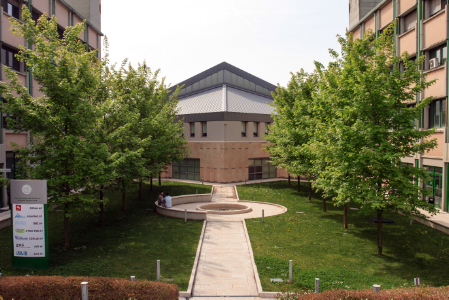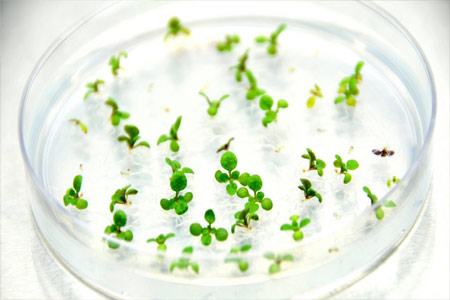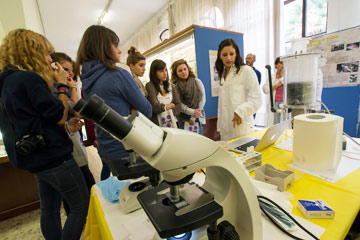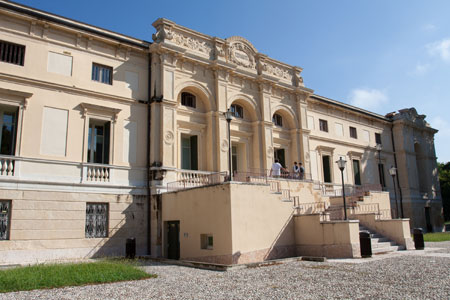To show the organization of the course that includes this module, follow this link  Course organization
Course organization
Learning outcomes
The Plant Biochemistry course is proposed to give an integrated view of some fundamental aspects of the primary metabolism of the plants, as well as the mutual integration and infuence of the various metabolic ways. The aim of the course is to define some main metabolic ways and to supply the bases for the methodologies of metabolic analyses by way of biochemical, genetic and biophysical methods. The study of the theoretical bases will be integrated by the illustration of biotechnological applications of metabolic engineering, by widening the biochemical and biophysical methods for selection of mutants.
Program of the course
1. Plastids: structure and functional specialization. Chloroplasts, biosynthesis of chlorophylls and carotenoids, biosynthesis of lipids, structure of the plastidial genome and gene expression, import of proteins.
2. Photosynthesis: light absorption, fate of the excited states, role of chlorophylls and carotenoids, the antenna system of higher plants, kinetics of energy transfer between chromophores.
3. Photosynthesis: the reaction centers, electron transfer through the thylakoid membrane, PSII and PSI, cycle Q, water oxidation, synthesis of ATP, lateral heterogeneity and state transitions, photoxidative stress, Chlamydomonas reinhardtii as source of bio-hydrogen.
4. Photosynthesis: using chlorophyll fluorescence to study the photosynthetic mechanisms (damages to the photosynthetic apparatus, Non-Photochemical Quenching (NPQ), state transitions …) or to facilitate the screening of a population of mutants.
5. Photosynthesis: CO2 organication in C3, C4 and CAM plants, the photorespiratory pathway.
6. Nitrogen metabolism: endosymbiotic fixation of N2, structure and function of the radical nodules, absorption and reduction of nitrate, reduction of nitrite.
7. Sulfur metabolism: chemistry of sulfur, absorption, transport and assimilation of the sulfate, role of the glutathione, phytochelatins.
8. Regulation and interconnection of metabolic pathways: carbohydrates metabolism, synthesis and degradation of starch and sucrose, interactions between hexoses phospate pool and pentoses phosphate pool, regulation of carbon assimilation, metabolism control between cytosol and chloroplast, gluconeogenesis.
9. Aminoacids biosynthesis: assimilation of inorganic nitrogen, synthesis of aromatic aa, synthesis of sulfur-containing aa, general view on biosynthesis of aspartate-derived aa, branched chain aa, proline, hystidine, arginine, interactions between nitrate assimilation and carbon metabolism, role of mitochondria in supporting the aa biosynthetic pathways into the plastid.
10. Mitochondria of higher plants.
11. Secondary metabolism: activation of the secondary metabolism and role of reactive oxygen specie (ROS), biosynthesis of IPP (chloroplastic and cytosolic pathways), biosynthesis of terpenoids, structure and function of alkaloids, phenylpropanoids, lignins, flavonoids, coumarins, cyanogenic glycosides.
The examination is composed by two parts:
a) Written examination. In 60 min it will come tested the ability of the student to describe the main metabolic ways with the molecular structures of intermediates involved, including enzymes and co-factors that catalyze each molecular step.
b) Oral examination. The student will discuss the arguments explained along the course, having tried to demonstrate critical spirit and knowledge of the basis of the subjects.








